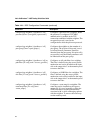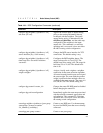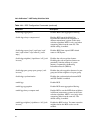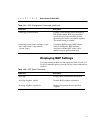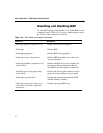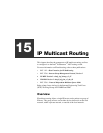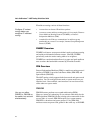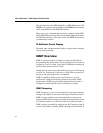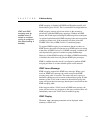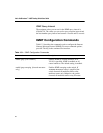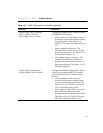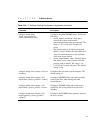
276
Intel
®
NetStructure™ 480T Routing Switch User Guide
IP multicast routing consists of these functions:
Configure IP unicast
routing before you
configure IP multicast
routing.
• A router that can forward IP multicast packets.
• A router-to-router multicast routing protocol, for example, Distance
Vector Multicast Routing Protocol (DVMRP), or Protocol
Independent Multicast (PIM).
• A method for the IP host to communicate its multicast group
membership to a router. For example, Internet Group Management
Protocol (IGMP).
DVMRP Overview
DVMRP is a distance-vector protocol that is used to exchange routing
and multicast information between routers. Like RIP, DVMRP
periodically sends the entire routing table to its neighbors.
DVMRP has a mechanism that allows it to prune and graft multicast
trees to reduce the bandwidth consumed by IP multicast traffic.
PIM Overview
Protocol Independent Multicast (PIM) is a multicast routing protocol
similar to DVMRP. It provides both Dense Mode (PIM-DM) and
Sparse Mode (PIM-SM).
The 480T routing switch supports both dense mode and sparse mode
operation. You can configure dense mode or sparse mode on a per-
interface basis. Once enabled, some interfaces can run dense mode,
while others run sparse mode.
PIM-DM
You can run either
DVMRP or PIM-DM on
the switch, but not both
simultaneously.
PIM-DM routers perform reverse path multicasting (RPM).
However, instead of exchanging its own unicast route tables for the
RPM algorithm, PIM-DM uses the existing unicast route table for the
reverse path. As a result, PIM-DM requires less system memory.
PIM-DM is a broadcast and prune protocol. Using PIM-DM,
multicast routes are pruned and grafted in the same way as DVMRP.



